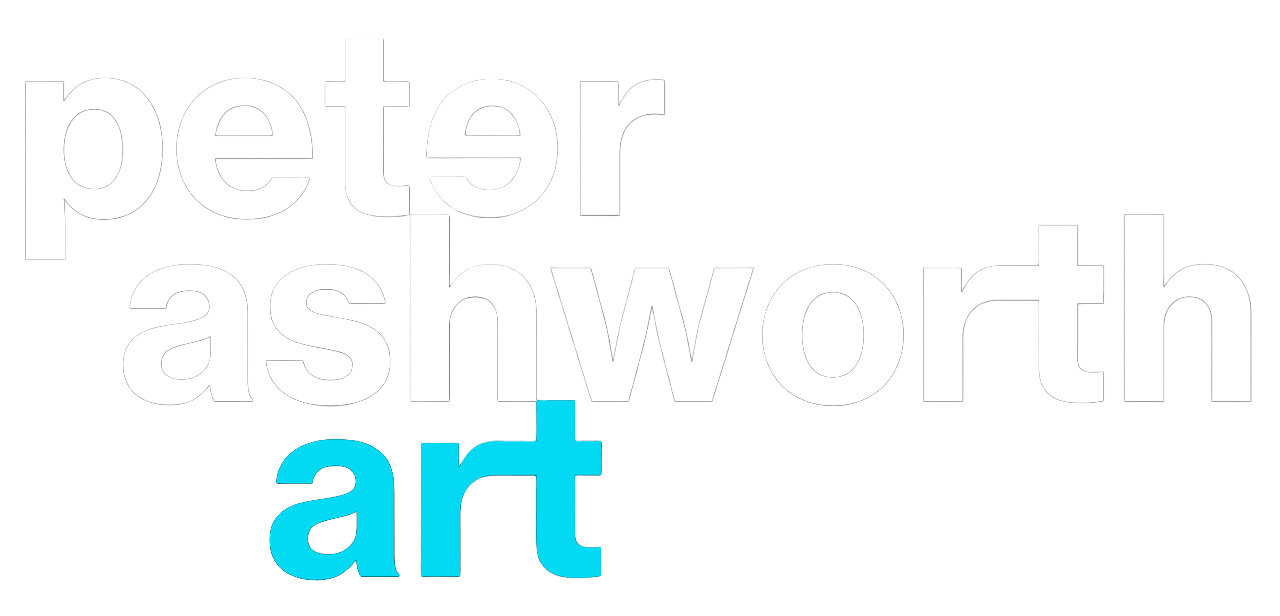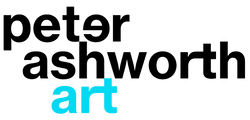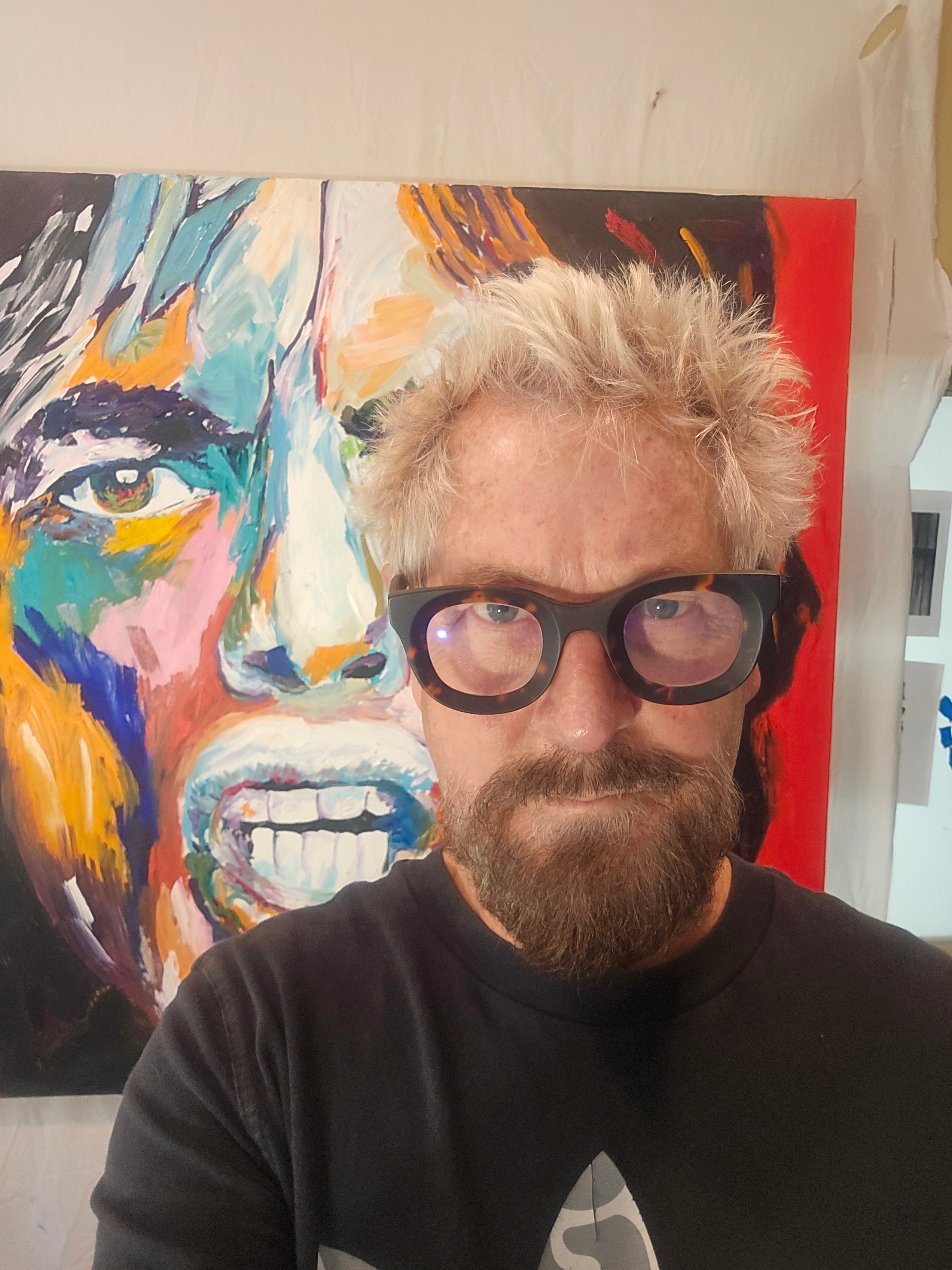
love+wonder: where art creates love
“I believe ART and LOVE are the same thing.
And I believe LOVE is a way to think, and to 'see' the world. LOVE has the power to transform us, has a profound impact on our optimism and well-being, and can play a significant role in creating a life well-lived.” – Peter Ashworth
Love is not just a feeling, it’s a lens. When you choose to live through love, it transforms your optimism, your health, and your very sense of what’s possible.
My Love + Wonder Collection is built on this truth: great art infused with love has the power to shift how we think, feel, and live. These works are more than decoration—they’re portals into a life well-lived.
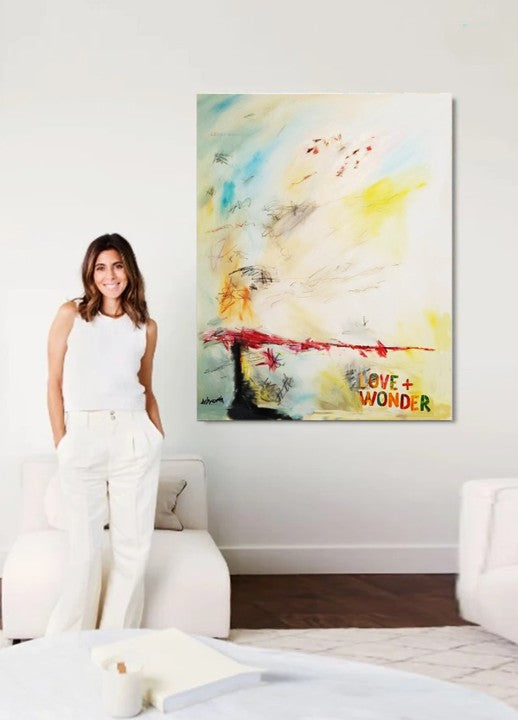
love + wonder collection – guided experience
These artworks were created with real love—energy that was felt, focused, and poured into each brushstroke. Quantum physics tells us that when two things are deeply connected, they stay connected—even across time and space.
This also applies to the emotion of LOVE.
Take a moment.
Stand in front of a piece that draws you in.
Breathe slowly. Notice the colors, the textures, the light.
Now ask yourself: What do I feel?
Can you sense warmth? Stillness? Joy? A memory? A feeling of LOVE?
That’s not just the art—it’s the LOVE inside it reaching you. If you’re here with someone, quietly share what you felt.
If you’re alone, smile—and know the connection is still there.
This is Love + Wonder.
It’s not just something to look at.
It’s something to feel.
This series is rooted in the real quantum science of how love changes us.
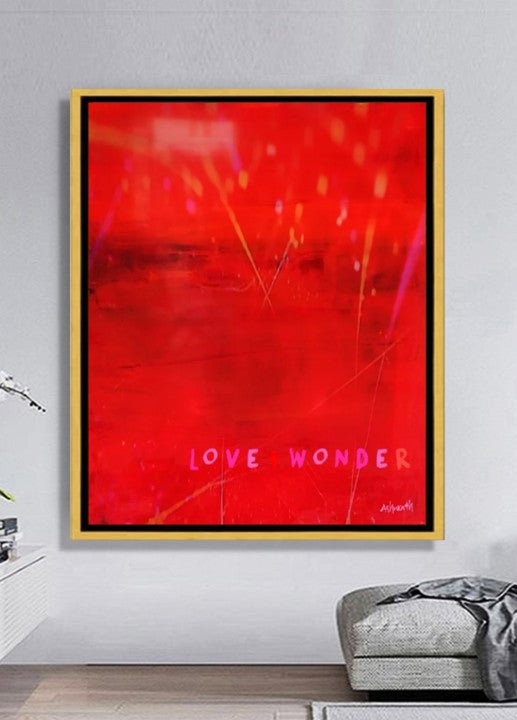
the science of love, energy, and color
Through the subatomic principles of Quantum Mechanics, I can actively + consciously infuse LOVE into the artwork during its creation, that across time and distance—can transfer the LOVE energy of the artist to you, the viewer, through the artwork hanging in your space.
This series is rooted in the real science of how love changes us. Neuroscience shows that experiencing love releases oxytocin, dopamine, and serotonin—chemicals that lift mood, reduce stress, and improve well-being.
Quantum physics tells us everything is energy, and that energy responds to intention. My art harnesses the frequencies of color to uplift, heal, and inspire. Each canvas is an experiment in energy transfer—transforming positive intention into a visual form that resonates in your home and your life.
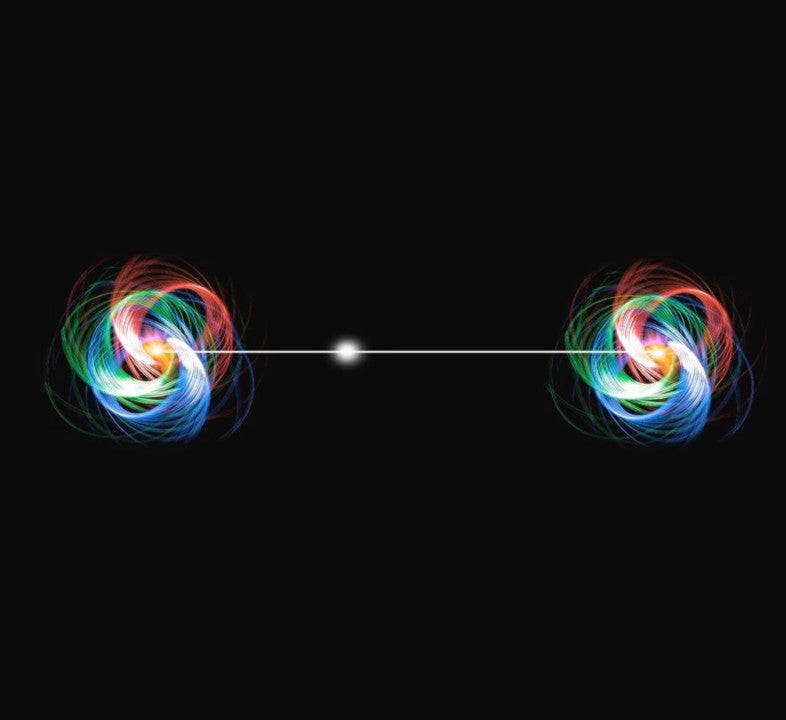
quantum entanglement and the art of connection
Quantum mechanics reveals something extraordinary: when two particles are entangled, they remain connected across time and space. I believe the same is true of love—and of art.
When I create, I consciously infuse love into the work. That energy imprints itself into the painting, traveling beyond me into the home of the collector. The result? A living bond between artist, artwork, and viewer. Each piece carries a lasting emotional imprint—an entanglement of love, wonder, optimism, and possibility.
Photograph by Victor De Schwanberg - Fine Art America
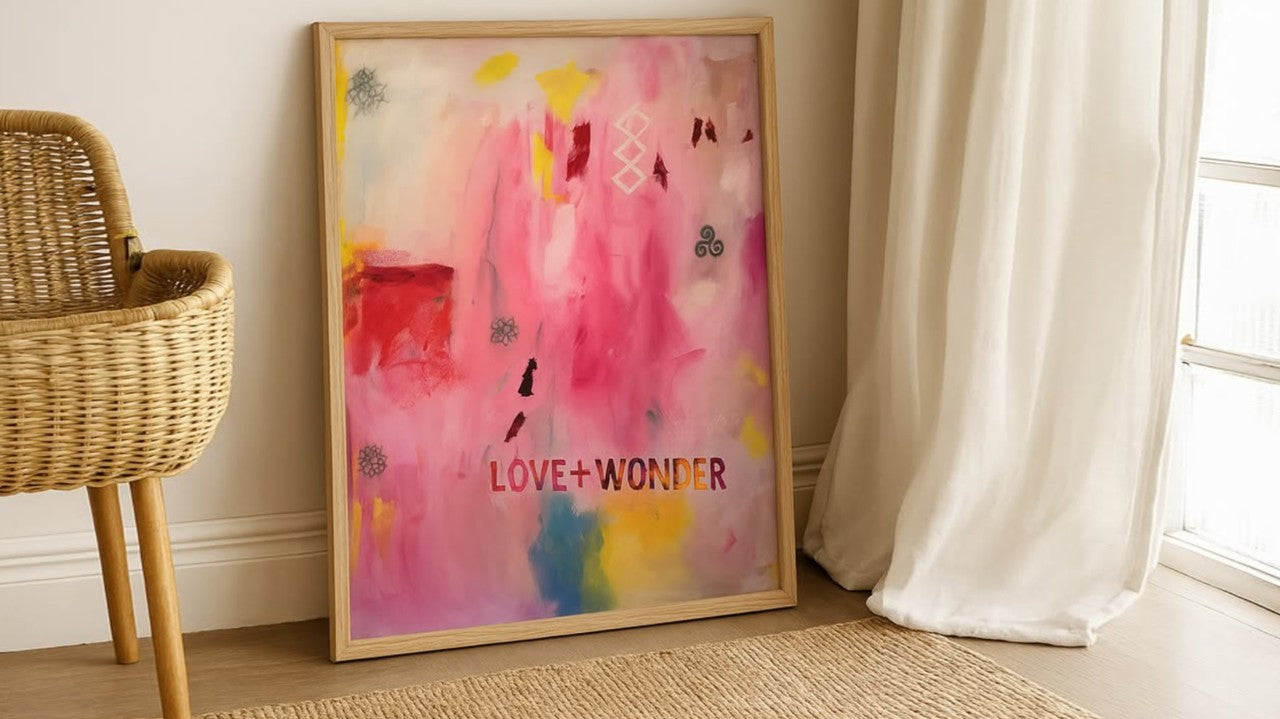
manifestation, neuroplasticity, and a life transformed
Art doesn’t just hang on a wall—it reshapes your inner world. Through neuroplasticity, the brain’s ability to rewire itself, daily encounters with art infused with love can shift thought patterns, strengthen optimism, and inspire new ways of living.
My Love + Wonder Collection is designed to do exactly that. By surrounding yourself with art that radiates love, you create an environment that sparks joy, nurtures well-being, and even accelerates personal growth. This isn’t just art. It’s love. Manifested.
Quantum entanglement proves it: once connected, always connected: Love + Wonder
Sources:
This is a well-regarded scientific review on the phenomenon of quantum entanglement as a foundational reference:
R. Horodecki, P. Horodecki, M. Horodecki & K. Horodecki, “Quantum entanglement” (Review of Modern Physics, 2009) — reviews the theory, detection, quantification, and applications of entanglement. Physical Review Links
Also see its arXiv version: “Quantum entanglement” (Horodecki et al., 2007) — available at arXiv. arXiv
Another recent review: Irénée Frérot, Matteo Fadel & Maciej Lewenstein, “Probing quantum correlations in many-body systems: a review of scalable methods” (2023) — discusses entanglement, Bell nonlocality, and how to detect quantum correlations in large systems. arXiv
.
“Through subatomic quantum principles, I can consciously infuse LOVE into the artwork during its creation, and that across time and distance the LOVE energy transfers via the artwork to the viewer.”
Relevant papers / proposals:
- “A Consciousness-Based Quantum Objective Collapse Model” (Okon & Sebastián, 2018, arXiv preprint)
This paper offers a variant of an objective collapse (CSL-type) model in which the collapse operator depends on a measure related to consciousness (integrated information). It is one of the more serious attempts to link consciousness (and by extension “intentional states”) with quantum collapse dynamics.
→ arXiv: A Consciousness-Based Quantum Objective Collapse Model arXiv - “Towards a process-based approach to consciousness and collapse in quantum mechanics” (Arroyo, de Matos Nunes Filho, Moreira dos Santos, 2024, arXiv)
This is a recent preprint exploring a “consciousness causes collapse” interpretation (called CCCI) from a process metaphysics perspective, trying to refine and defend that kind of model.
→ arXiv: Towards a process-based approach to consciousness and
collapse in quantum mechanics arXiv - “Putting Mind Back into Nature: A Tribute to Henry P. Stapp” (Presti, 2019, arXiv)
This is a philosophically oriented essay in which the author reviews Henry Stapp’s decades-long attempts to incorporate mind (consciousness) into quantum ontology, arguing that quantum mechanics may imply an irreducible role for experiential / mental aspects in nature. Though not experimental, it is widely cited in the mind–quantum literature.
→ arXiv: Putting Mind Back into Nature arXiv
“Just as quantum entanglement links two particles across time/space, so love infused in art can entangle the artist, artwork, and viewer, forming a lasting emotional imprint.”
Relevant papers / proposals:
- “Quantum aspects of the brain-mind relationship” (ScienceDirect / Elsevier article, abstract)
This article surveys proposals and empirical findings suggesting that part of the mind–brain relation may have quantum features (superposition, entanglement).
→ “Quantum aspects of the brain-mind relationship” (Elsevier) ScienceDirect - “Quantum Theory of Consciousness” (Sha & Xiu, preprint / ResearchGate)
This work proposes that everything is a quantum vibrational field, and that conscious experience can be explained by wavefunction-type formalism; it includes statements about nonlocal connections.
→ PDF / preprint: Quantum Theory of Consciousness ResearchGate - “From Information and Quantum Physics to Consciousness and Reality” (MDPI)
This paper explores how quantum entanglement and information theory might underpin the emergence of spacetime and the observer’s perception — thus touching on ideas of nonlocal connections rooted in quantum entanglement.
→ MDPI article: From Information and Quantum Physics to consciousness and Reality MDPI
“Through neuroplasticity, daily encounters with art infused with love can rewire the brain, strengthen optimism, shift thought patterns, and accelerate personal growth (i.e. manifestation).”
Relevant papers:
- “Your Brain on Art: The Case for Neuroaesthetics” (Magsamen et al., PMC)
This is a review of the field of neuroaesthetics, describing how encountering art activates reward circuits, releases dopamine, serotonin, etc., and links aesthetic experience to measurable neural processes.
→ PMC: Your Brain on Art: The Case for Neuroaesthetics PMC - “Art therapy and neuroscience: evidence, limits, and myths” (Strang et al., 2024, Frontiers in Psychology)
This is a recent review weighing evidence and limitations of linking art therapy with neural processes (including neuroplasticity). It is very cautious: it affirms that art-making can influence emotion, cognition, brain plasticity in some contexts, but points out many unresolved issues.
→ Frontiers in Psychology: Art therapy and neuroscience: evidence, limits, and myths Frontiers - “How the Arts can Enhance Neuroplasticity: A Literature Review” (Garrett, 2020, thesis / review)
This is a review focusing on how creative arts modalities (music, visual art, etc.) can promote neural plasticity, especially in therapeutic or rehabilitative settings.
→ PDF: How the Arts can Enhance Neuroplasticity DigitalCommons at Lesley
Quantum Entanglement: (how it works, how it’s tested, its implications):
- “Quantum Entanglement” — Reviews of Modern Physics 81, 865 (2009). This is a comprehensive review covering characterization, detection, quantification, distillation, etc. Physical Review Links
- “Quantum entanglement: Principles and research progress in quantum information processing” — a review article covering foundational theory, methods to generate/detect entanglement, and applications in quantum information. ResearchGate “Probing quantum correlations in many-body systems: a review of scalable methods” (Frérot, Fadel, Lewenstein, 2023, arXiv) — discusses entanglement, Bell nonlocality, and how to detect quantum correlations in systems with many particles. arXiv
